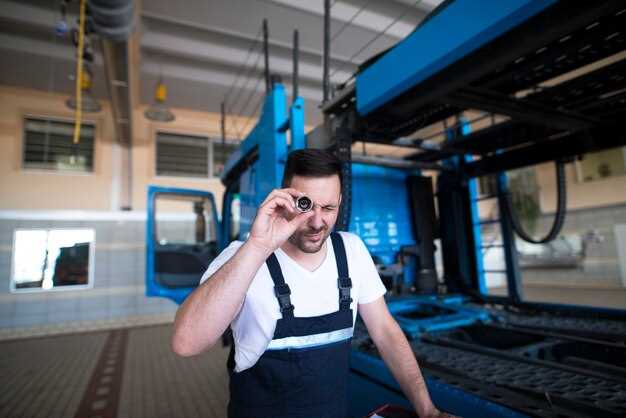Installing aftermarket lockers – what to expect


Installing aftermarket lockers can significantly enhance your vehicle’s performance, particularly in challenging off-road conditions. These modifications allow for better traction and control by distributing power more evenly across the wheels, which is essential when navigating rugged terrain or slippery surfaces. As you consider this upgrade, it’s important to understand not only the benefits but also the expectations and realities associated with the installation process.
Preparing for the installation of lockers involves careful planning and consideration of your vehicle’s specifications. Whether you’re opting for a selectable locker or a lunchbox style, the complexity of installation can vary greatly. It is crucial to have a clear understanding of the necessary tools and potential adjustments that may be required for your specific vehicle make and model. This planning phase will help streamline the process and reduce unforeseen challenges.
Finally, once your aftermarket lockers are installed, you can look forward to a noticeable improvement in your vehicle’s handling and off-road capability. However, it’s essential to keep in mind that there may be a brief adjustment period as you acclimate to the new driving dynamics. From routine maintenance to modifying driving techniques, understanding these factors will ensure you fully benefit from your investment in lockers.
Understanding Different Types of Lockers and Their Applications

When it comes to enhancing your vehicle’s traction and performance, aftermarket lockers offer a variety of options tailored to different driving conditions and styles. Each type of locker serves a unique purpose, and understanding their applications is key to making an informed decision.
Open Lockers are the most basic type, allowing wheels to rotate independently. While they work well in regular driving situations, they can lead to wheel slip when one wheel loses traction. Open lockers are ideal for everyday vehicles that don’t frequently encounter off-road conditions.
Limited Slip Lockers are a step up, utilizing clutches or viscous fluids to provide a degree of locking when one wheel starts to slip. This type is suited for light off-road use and improves handling in wet or slippery conditions without sacrificing much on-road performance.
Locking Differentials offer a selectable mechanism that can fully lock both wheels on an axle. This feature is essential for serious off-road enthusiasts, as it provides maximum traction in challenging environments such as mud, rocks, or deep snow. Locking differentials are invaluable for vehicles frequently used in rugged terrains.
Electronic Lockers bring advanced technology into the equation, allowing the driver to engage or disengage the locker at the push of a button. This flexibility makes them highly adaptable for various conditions, providing the user with control over traction based on real-time needs.
Air Lockers operate via an air compressor system and are known for their reliability and effectiveness. When engaged, they lock the differential, ensuring equal power distribution to both wheels. Air lockers are favored by off-roaders who require a dependable and robust solution for extreme conditions.
Each type of locker has its applications and benefits, making it crucial to select the one that aligns with your driving habits and environment. A thorough understanding of these lockers will help you enhance your vehicle’s capability and performance.
Step-by-Step Installation Process for Aftermarket Lockers

Installing aftermarket lockers can significantly enhance your vehicle’s off-road performance. Below is a detailed step-by-step process to guide you through the installation.
Step 1: Gather Necessary Tools and Materials
Before starting, ensure you have the required tools. You’ll need basic hand tools such as wrenches, sockets, and screwdrivers. Additionally, a floor jack and jack stands will be necessary to elevate the vehicle safely. Don’t forget to have your aftermarket lockers, gear oil, and any specific installation kits that come with your lockers.
Step 2: Prepare the Vehicle
Begin by parking your vehicle on a flat surface and engaging the parking brake. Use the floor jack to lift the vehicle and secure it with jack stands, ensuring it is stable and safe to work under.
Step 3: Remove the Wheels
Loosen the lug nuts on the wheels, then remove them completely. Once the wheels are off, you will have better access to the wheel hubs and differential.
Step 4: Remove the Differentials’ Cover
Locate the differential cover and remove any bolts securing it. Gently pry the cover off and clean the mating surfaces. You may need to drain the differential fluid into a suitable container.
Step 5: Remove Existing Differential Components
Take out the existing differential components carefully, including the carrier, gears, and any shims. Pay attention to the way parts are arranged, as you will need to replicate this during reassembly.
Step 6: Install Aftermarket Lockers
Place the aftermarket lockers into the differential housing, ensuring they fit snugly. Follow the manufacturer’s instructions for any specific adjustments or settings required for your lockers.
Step 7: Reassemble the Differential
Reinstall all components in the reverse order of removal. Ensure that all gears are properly aligned and that any required shims are correctly placed. Seal the differential cover with a gasket or RTV sealant, and torque the bolts to the specified setting.
Step 8: Refill Differential Fluid
Refill the differential with the appropriate type of gear oil as specified by the manufacturer. Check the fluid level and ensure it reaches the proper fill line.
Step 9: Reinstall Wheels and Lower the Vehicle
Reattach the wheels and tighten the lug nuts. Carefully lower the vehicle back to the ground using the floor jack, and make sure everything is stable.
Step 10: Test the Lockers
Before hitting the trails, conduct a test drive in a controlled environment to ensure the aftermarket lockers are functioning properly. Engage and disengage the lockers while turning to verify their effectiveness.
How Aftermarket Lockers Affect Vehicle Traction and Handling
Aftermarket lockers significantly enhance a vehicle’s traction by ensuring that both wheels on an axle turn at the same rate, regardless of surface conditions. This is particularly beneficial in off-road situations, where uneven terrain can cause one wheel to lose grip. With lockers engaged, power is evenly distributed, allowing for improved traction on slippery surfaces such as mud, sand, or snow.
The installation of lockers can also influence a vehicle’s handling characteristics, especially during cornering. In a standard differential setup, the outside wheel travels a greater distance than the inside wheel. However, with lockers, both wheels are locked and move together. This can result in decreased maneuverability on paved roads, leading to potential understeer. Therefore, drivers should be aware that while lockers provide enhanced traction in off-road conditions, they can compromise handling on smoother surfaces.
Another factor to consider is how the engagement of lockers affects ride quality. Lockers can introduce additional stress on drive components, leading to increased wear and potential mechanical issues if not properly managed. It’s essential to select quality aftermarket lockers designed for the specific vehicle type to mitigate these risks and maintain reliability.
Overall, aftermarket lockers can be a game-changer for traction and performance, especially in off-road environments. However, their impact on vehicle handling requires careful consideration and adjustment to driving style to ensure safety and stability on various terrains.
